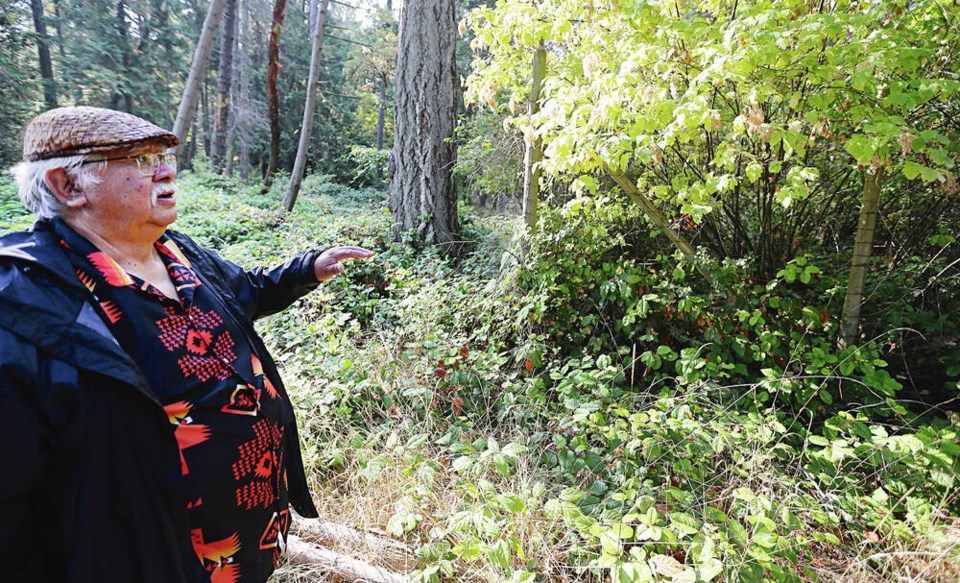First Nations are meeting with Parks sa国际传媒 on Monday to discuss what they feel is a better plan to kill all the European fallow deer on Sidney Island.
The eradication project was halted on Nov. 5 — just days before a planned mass slaughter by contracted sharpshooters — after at least six deer, including one native blacktail, died after being entangled in net fencing erected over much of the island to herd the animals into killing zones.
Tsawout Hereditary Chief Eric Pelkey said aquaculture netting should not be used for the kill.
Instead, he’s proposing a row of hunters spread across the island to flush the deer from the wider privately owned end and into the narrow, unpopulated national-park side of the island. The animals would be killed along the way or en masse at Sidney Spit.
“We don’t want the fencing because it’s not necessary,” said Pelkey. “We have lots of hunters who want to be engaged in the hunt and we want to present that option to Parks sa国际传媒.”
He added that blacktail deer would be allowed to pass and would not be part of the overall kill.
Pelkey said using rows of hunters to flush out deer has been done by generations of First Nations on the Gulf Islands.
Up to this point, First Nations have only been part of the harvesting of meat in the initial killing phase of the Sidney Island Restoration Project last December. Earlier this year, an Indigenous company was hired to remove vegetation to facilitate the installation of fencing by a private company.
First Nations were also employed early on in the identification of edible and medicinal vegetation that has all but disappeared during decades of over-browsing by the European fallow deer, which moved in from nearby James Island a century ago.
In the first phase of the kill in late December 2023, deer were shot from a helicopter by New Zealand and U.S.-based contract sharpshooters during the day and on the ground at night.
A total of 84 deer were killed, including 18 native black-tail deer, in the $800,000 effort, which took place over 11 days.
There is no real count of the number of fallow deer on Sidney Island. Parks sa国际传媒 has estimated there could be up to 900 while local residents say the number is likely under 100.
The decision to postpone the second phase, which had been set to start on Nov. 15, was welcomed by critics who have questioned the $12-million multi-year strategy to rid the nine-square-kilometre island of introduced fallow deer and restore the ecosystem.
Pelkey said First Nations “felt betrayed” by the decision to postpone the hunt just days before what was to be the final killing sweeps.
“We worked for years to get the eradication of fallow deer, but now Parks sa国际传媒 has stopped the project. Now they have betrayed the trust of the Wsanec people to restore the island. “
Parks sa国际传媒 said it remains committed to the overall project.
In a statement, the federal agency said it has been working since 2018 with partners to plan and implement a long-term and sustainable forest restoration project on Sidney Island and it promises to follow through with the plan.
“This pause does not affect Parks sa国际传媒’s commitment to restoring this vital, sensitive coastal ecosystem,” said the statement. “Discussions and collaboration in the coming weeks are integral to re-imagining the project and establishing next steps.”
Parks sa国际传媒 said it will reassess how to ensure project goals are met while upholding the highest animal welfare standards, adding it is too early to know if fencing will be part of the strategy.
In the meantime, the fasteners holding the 35 kilometres of net fencing to stakes and trees have been clipped and the netting has been lowered to the ground. Parks sa国际传媒 said the netting has not been removed and it continues to be monitored by staff for possible animal entanglements.
The sharpshooters for the second phase remain on standby pending the next move.
Public Services and Procurement sa国际传媒 is responsible for administering the contract with a company called Coastal Conservation, which hires the sharpshooters.
The deal remains in place until March 31, 2026. However, a temporary stop-work order has been issued.
Public Services and Procurement sa国际传媒 will continue its oversight to ensure the project remains within scope and adheres to the contract’s terms and conditions, said Parks sa国际传媒.



